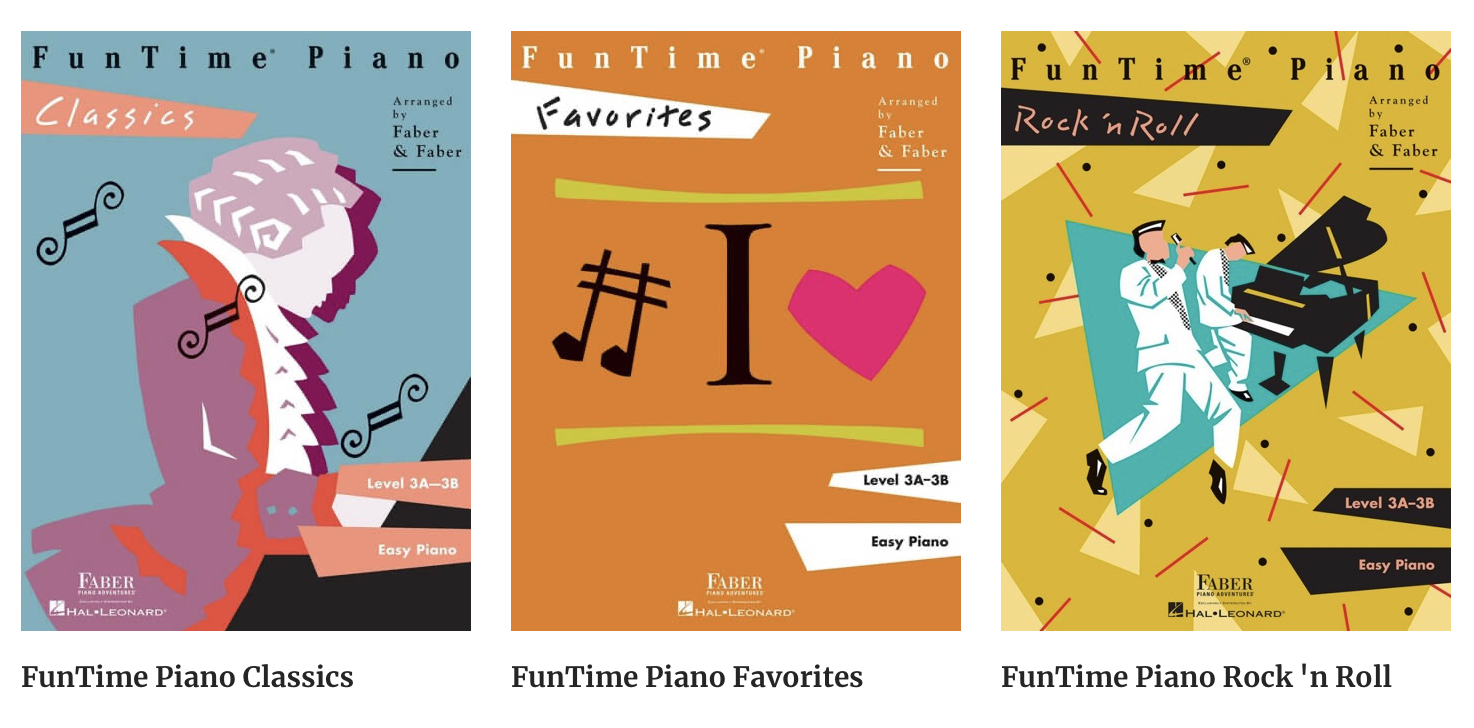Piano Adventures- Book Review
Piano Adventures is a large catalogue of music books and repertoire created by Nancy and Randall Faber that combines steadily progressing curriculum with music that every student will recognize and love.
There are 6 levels in Piano Adventures: Primer through 5, with 5 books in most levels- Lesson, Theory, Technique & Artistry, Sight-reading, and Performance. In addition to these levels, there are My First Piano (A, B & C) books for pre-readers and Accelerated options for adults or older beginners.
The books I use most often from this series include the Lesson and Theory books from each level. From there, I would personally add the Technique and/or Performance book, depending on the needs of each particular student. I normally include basic technique in my lessons, so unless a student shows a need for extra technique work, I don’t usually require the Technique book. If I had a student that was flying through the Lesson book and needed extra challenge, I would supplement with the Performance book, which contains pieces that might require a little more practice hours to complete. The Performance book is also useful for finding appropriate recital pieces.
Beyond the basic 5 books for every level, there are additional supplement books that focus on different styles and genres of music. These include Christmas, classics, rock ‘n roll, ragtime, jazz and blues, hymns, favorite, popular, Disney, and more! These books are great for students who have a favorite style of music. They can encourage practice, if practice has been lacking, and also make for interesting recital choices! These books are easy to supplement with because they are leveled in accordance with the basic 5 set mentioned above. They align so well with the Lesson books, you are sure to make easy transitions between the Lesson and Supplemental books.
Another great feature of the Piano Adventures library is the organization of beginning and early intermediate classical repertoire. There are several books of well-graded classics containing music from all 4 music periods - baroque, classical, romantic, and 20th century; in addition to Sonatina books, and selections from Bach, Grieg, and Chopin.
Some criticism that this series receives is that it uses mostly “hand position” teaching. In other words, students are memorizing hand positions for each piece- which is not really a reliable form of music reading because, as we know, music does not usually stay in one place on the keyboard. While this is true, I find that my students are able to overcome this small hindrance by practicing scales, chords, and other transpositions frequently. I have not personally found any hindrance with this format!
Over all, this is one of my favorite book methods to teach from. I hope you found this review helpful!
This article contains affiliate links. Thank you for supporting my work!
